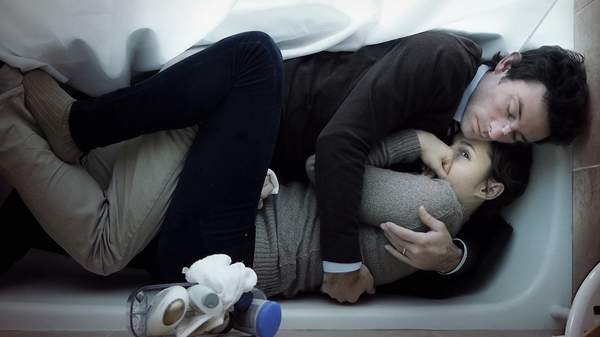Overview
Imagine you only see one film this year (because of e.g. extreme electricity rationing, extreme ADHD, etc). You'd want to make it one that would blow your freaking mind. So take some advice from sad parallel universe you and, in a year where you'll probably see many films, make one of them Upstream Color, the dreamy feature that emphatically puts paid to the idea that there are only seven (or nine, or twelve) stories in fiction.
Upstream Color is only the second movie from writer/director Shane Carruth, whose indie time travel headspin Primer won the Grand Jury Prize at Sundance in 2004 and a cult following soon after. The many fans of that film have since been hankering for another dose of Carruth's signature style. (If it seems unlikely a one-film wonder could have a 'signature style', you have not seen Primer.)
However, it turns out festival success does not a Hollywood career ensure, and after some upsets (his much-talked-about feature A Topiary never came to fruition), Upstream Color finally exists in the world, having been written, directed, produced, shot, scored, edited and acted in by Carruth himself. The guy is a lesson in self-sufficiency.
This gorgeous, unknowable, deeply affecting film makes Primer look almost conventional, given time travel is a genre filmgoers know a little something of. If Upstream Color had a genre, it'd be something like 'biological art sci-fi'.
It starts with a worm. A worm found in the roots of a rare orchid stocked at an ordinary nursery. One of the nursery's customers (Thiago Martins) distills the worm into a drug, which we see, taken recreationally, allows its users to connect telepathically. This man, however, uses it to drug young professional Kris (Amy Seimetz) at a club, and through a complex process of manipulation lasting a week, rob her of her tangible assets.
When Kris comes to, the worm is still in her body, wriggling about. Soon enough, a man (Andrew Sensenig) using infrasound lures her to a field, where he removes the worm from her body — and transfers it into a pig. In this world, or any other, a person does not bounce back from the experience lightly. Years later and convinced she's suffering a mental illness, Kris is still trying to piece her life back together. A man she connects with on the train, Jeff (Carruth), might be her shot at a real relationship.
Meanwhile, Kris's pig goes back to life in its sty under the watch of the infrasound/surgery man, who also seems to indulge a sideline in field recording. Upstream Color is all this, but it's also not this. The effect is all in the way the story is layered, the way it cuts between these seemingly separate ecosystems, and the sensuous, organic cinematography throughout. It's not abstract — it is meticulously, concretely plotted — and yet the telling of it is open-ended and deliberately foggy as remnants of a dream. It moves like poetry but has the shape of quantum physics, conveying the beauty and pain of fate, as shaped by chance.
It's a film you desperately want to piece together, and yet you know that piecing it together is not the point. (Though Carruth will spell it out for you if you want, and it won't disappoint a la Richard Kelly on Donnie Darko.) Sam Adams of the AV Club argues that we're mistaken in holding up puzzle-box movies with that perfect twist, like Memento or The Usual Suspects, as a cinematic holy grail when the rewards of a film like Upstream Color are greater, and he's right. You might solve the puzzle but it will open to reveal another. You might solve the puzzle but find the value was in the pieces.
Information
When
Thursday, August 22, 2013 - Wednesday, September 18, 2013
Thursday, August 22 - Wednesday, September 18, 2013
Where
Palace Cinemas SydneyVarious locations across Sydney
Sydney
